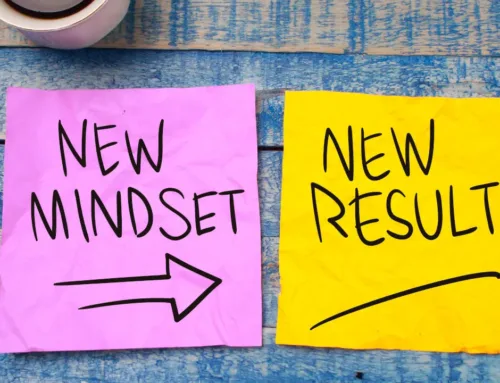How to Network Effectively
By Lou Dubois
Success in business requires you know what other people know but also who other people know. But networking takes more than just a LinkedIn profile or a deep Rolodex.
Making connections and maintaining relationships with the people who support you throughout your career can be the key to success for most individuals. By effectively building a network of colleagues, business associates and more, you are ensuring that whenever you need a new client, a new job, or to develop your skills further, you can call upon your network to help you.
Networking is perhaps more crucial than ever, as an established relationship can make you stand out against the competition. For anyone who has ever worked as an intern at a large organization, one of the best pieces of advice you'll receive is to network, network, and network more while you're there. Take advantage of the access you've been given, go out of your way to meet other intelligent individuals and build up a network of contacts so that when you leave (or if they do first), there is a foundation for a relationship in place.
This guide will teach you about the different categories within your network of contacts, how best to utilize some of the newest features on LinkedIn and lastly why face-to-face networking also known as in-person offline networking is still the best.
How to Network Effectively: Networking Categories
Back when snail mail was the main form of business communication, it could take days to establish a connection with someone from another company. With the advent of the telephone, professionals gained the ability to just pick up the phone and call someone to make that contact. Today, technology has in many ways made even telephones unimportant. With only a person's name, you can Google them, look at their LinkedIn profile, their Facebook information and if they tweet then their Twitter stream. The availability of information on people has drastically improved, but it doesn't detract from the importance of old-fashioned offline networking. If you ask ten different people to define networking, you'll get ten different answers. But according to The Oxford Dictionary, a network is "a group of people who exchange information, contacts, and experience for professional or social purposes."
"The real definition of networking to me is building relationships before you need them," says Diane Darling, an expert on the topic and the founder and CEO ofEffective Networking, Inc. based in Boston. "It's difficult because we tend to only do things in life when we need to. But if you're running a marathon, you don't wait until the morning of the race and then just go out to run. On that day of the race, you remember all of the time and hard work you put in ahead of time while training to get to that point. With networking, when you really need a job or new clients, empowering your existing contacts is the key to getting you there."
When considering your contacts, Darling recommends that you think of them as five different subgroups within your network, try not to interconnect and view it like an inverted pyramid.
1. Database: Everyone in your contact that you've interfaced with (email, phone, speaking engagements, rolodex, Twitter), this is the largest group.
2. Network: Your friends and family network, alumni network (example:University of Florida alumni), or business network, these are specific sub-groups but people you trust. They should rarely go over 200 contacts, and to determine if someone is in your network, consider if they would immediately return your phone call. If they get back to you, then they are in.
3. Inner Circle: Ideally about 50 people who can rotate annually and give you candid career feedback about your career. Darling likes to put together a survey atSurveymonkey.com every two years so these people can give her honest thoughts without fear of offending her.
4. Personal Board of Advisers (PBA): 5-6 individuals you are particularly close with and who should be your go-to network for advice that not only touches on your career, but on you. How are you doing as a person?
5. Friends, Family and Fools (FFF): The most obvious group, these are people who probably like you because they either have to, or they just do.
Dig Deeper: Social Networking Answers for Skeptics and Newbies
How to Network Effectively: Social Media Networking
While networking has always been vital to business relationships and growing a client base, it's never been quite as easy as it is now. While face-to-face-interaction remains the best form of networking, you no longer need to rely on snail mail or even phone calls to interact and create a group. With social networking sites, you can research and connect with other professionals easier than ever. And the leader is LinkedIn, a seven-year-old business-oriented social networking site. As Darling notes, it's called hybrid networking, so taking the online to the offline (digital relationships to face-to-face meetings).
Launched in May 2003, LinkedIn has seen its biggest growth the last few years. It has gone from 30 million members and 200 employees in early 2008 to over 75 million worldwide members and over 600 employees, according to company spokespersonKrista Canfield. Additionally, a new member signs up for LinkedIn every second of every day, and the users span 200 countries worldwide.
There are plenty of additional options out there for social media networking (from the obvious ones in Facebook and Twitter to the less obvious like Ning, Yahoo! Groupsand more). But the real value of LinkedIn lies in using it to discover the hidden connections between your network and the rest of the world. There's not a lot of social tools or games, which is good because you won't get lost in all the features as you may on other sites. But to be successful on Linkedin, you must have a completed profile and have some a strategy.
According to a recent report from Nielsen, Americans now spend more time using social networks and online games than they do e-mail. In June alone, U.S. Internet users spent about 22.7 percent of their online time on social networking sites, up from 15.8 percent just one year ago, the report said. But there are tips and tricks to using LinkedIn (beyond simply creating a profile and connecting with contacts) to get the most out of your experience.
Dig Deeper: An Introduction to LinkedIn
How To Network Effectively: Utilize LinkedIn's Features
If you've joined LinkedIn but haven't filled out any of the more detailed descriptions of yourself, you're not getting the most out of the network. It's all about engagement in the community. And the more complete your profile is, the more that potential clients, HR managers and friends can learn about you. If you think about it very simply, your LinkedIn profile is search engine optimized (SEO), so the more information about your background, the more recommendations you've received, and the more quality contacts you have, the less barriers there are for a stranger to learn about you. But there are some additional tools on LinkedIn you should take special note of to optimize your experience.
Avoid Generic Requests
One of the biggest mistakes you can make on LinkedIn is to send a request to connect with a former colleague or business partner but without thinking about personalization.
"It bugs the heck out of me when I get an email that says 'Please Join My Professional Network'," Darling says. "You couldn't even take the time to change one word in the invitation? Why should I accept that invite? And even if I do accept, I might not delete you as a contact, but I'd probably be less likely to go out of my way for you."
Mind Your Online Manners
Your LinkedIn network is not the same as your Facebook friends or Twitter followers. This should be a pure business connection, so think about what you're saying and posting before you put the information out there. While some of your friends might be intrigued to know that you had bad sushi for lunch and would never go back to a specific restaurant, is that something your business contacts need to know?
"Think about managing your network and groups like you would handle yourself at a business lunch," Canfield says. "If you wouldn't go into lunch announcing that others should buy your product or service, don't do it in a LinkedIn group. Think about how you would feel if you were in someone else's shoes and you saw that post."
Quality Not Quantity
While certain sites like Twitter may be more about quantity of followers, LinkedIn should really be looked at as a home for quality connections. It really is about having those personal relationships. There are people on LinkedIn called LION users (short for LinkedIn Open Network), who will accept connections with nearly anyone without really having a true relationship.
"Slow it down and don't try to meet the entire world on LinkedIn," Darling says. "If you have 5,000 people in your network, it's not humanly possible to maintain that network well. The reason people loved TLC's Jon and Kate Plus 8 is that it was just total road kill. There's just no way to manage eight kids without a lot of money and a lot of help. It's the same way with networking. Spend extra time on the people you actually know."
Follow Companies
One of the coolest new features on LinkedIn (released April 29, 2010) is that you can now follow companies. For those familiar with the Facebook model where you can become a fan of a page or organization, it's quite similar but with a lot more benefits. By following a company like Apple, Microsoft or others, you can see status updates from that organization just like you would get from a person, including company news, new hires, departures and job listings. With LinkedIn's degrees of relevance, you might be surprised to know who in your network knows someone at that company or can put you in touch with the client or hiring manager for a position. Additionally, if you're a small business, you can actually see what people are following your company.
Search Your Competitors
This skill is certainly not specific to LinkedIn, as you should constantly be monitoring what your competitors are doing (not just companies, but individuals). If you work as a vice president of sales, do a quick search by title to see what other people with the same title have done with their LinkedIn profiles. You can see what is working for them, where they've been and more. That can in turn help you to make the most out of your profile, but more importantly maximize your value to your company.
Join Groups
Create them, join them and just get involved in them. Depending on your industry, there are plenty of groups that gather professionals in your field from similar positions and companies who you might not know. Users can click on the Groups tab at the top of the LinkedIn homepage to search groups formed around interests, industry or careers. As a group administrator, you can send out announcements to everyone in your subset or just read what others are up to.
Dig Deeper: How to Use Social Networking Sites to Drive Business
How To Network Effectively: Importance of Offline Networking
While online networks have certainly changed the industry and made it much easier to meet contacts and stay updated on their status and career news, nothing will ever touch the offline impact of face-to-face networking. The most obvious places you can network offline include "networking" events, conferences and more. And while many view conferences as an opportunity to learn information about new technologies and companies, it's also a great networking opportunity. And technology can help you both before and after the fact.
"When I go to a conference or networking event, I'm able to research the speakers and attendees online and see who I'm most interested in talking or listening to," says Darling. "In years past, you were stuck with a pamphlet and a three-line bio of folks, but now you can find out so much more. If it's someone I'm really interested in, I'll send them an email ahead of time with the header 'Look Forward to Meeting You at the Conference' and try to set up a time to talk."
Once you're actually at the event, the art of swapping business cards is just as important as it's always been. You can share your information with someone in just an instant, and many of the more creative individuals are including more than just basic information these days (LinkedIn URL's, personal websites, Twitter monikers, etc.). Some people even put their own photo on a business card, which is great in helping others remember who you were.
Again, technology and smartphones have made swapping information at an offline event easier than ever. With an innovative new app for the iPhone and Droid operating systems called Bump Technology, you can literally bump your phone with another person's and instantly your contact information is transferred (including info, pictures, calendar events, and even social network connections like LinkedIn). But once your information has been exchanged, it's vital you focus on engagement once you're home from the conference. Send a personal message to tell them how great it was to meet them, set up a time to meet again if they're in town, or join groups that they are a part of to engage in conversation.
Effective networking is all about the people you know and meeting new people through other people. Your network is only as strong as the way you manage it.
Dubois , Lou Aug. "How to Network Effectively." Inc. Magazine. 11 Aug. 2010. Web. 27 Aug. 2010. <http://www.inc.com/guides/2010/08/how-to-network-effectively.html>.
Share This Story, Choose Your Platform!
What our happy clients are saying
Contact Us for a Free Consultation
Tell us more about your business and how we can help.











